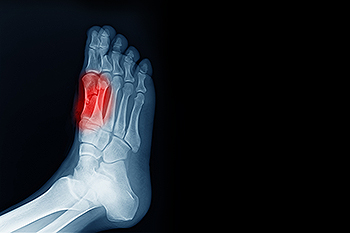Call Us Today! (203) 975-9600
SAME DAY APPOINTMENTS AVAILABLE
What Is Sesamoiditis?
Tuesday, 18 February 2025 00:00
Sesamoiditis is an inflammation of the sesamoid bones, which are two small bones located beneath the big toe joint. These bones help in the movement and support of the toe, bearing a significant amount of pressure during walking, running, and other activities. The condition typically occurs due to overuse or repetitive stress on the feet. High-impact activities, improper footwear, or abnormal foot mechanics can contribute to the development of sesamoiditis. Common symptoms include pain and swelling around the base of the big toe, especially when putting pressure on the affected area. The pain may worsen during physical activity or after long periods of standing or walking. People with sesamoiditis may also experience difficulty bending the toe or walking comfortably. If you have pain in this area of your foot, it is suggested that you consult a podiatrist who can provide an accurate diagnosis and treatment.
Sesamoiditis is an unpleasant foot condition characterized by pain in the balls of the feet. If you think you’re struggling with sesamoiditis, contact one of our podiatrists of Preferred Footcare, LLC. Our doctors will treat your condition thoroughly and effectively.
Sesamoiditis
Sesamoiditis is a condition of the foot that affects the ball of the foot. It is more common in younger people than it is in older people. It can also occur with people who have begun a new exercise program, since their bodies are adjusting to the new physical regimen. Pain may also be caused by the inflammation of tendons surrounding the bones. It is important to seek treatment in its early stages because if you ignore the pain, this condition can lead to more serious problems such as severe irritation and bone fractures.
Causes of Sesamoiditis
- Sudden increase in activity
- Increase in physically strenuous movement without a proper warm up or build up
- Foot structure: those who have smaller, bonier feet or those with a high arch may be more susceptible
Treatment for sesamoiditis is non-invasive and simple. Doctors may recommend a strict rest period where the patient forgoes most physical activity. This will help give the patient time to heal their feet through limited activity. For serious cases, it is best to speak with your doctor to determine a treatment option that will help your specific needs.
If you have any questions please feel free to contact our office located in Stamford, CT . We offer the newest diagnostic and treatment technologies for all your foot and ankle needs.
Call Us Today! (203) 975-9600
SAME DAY APPOINTMENTS AVAILABLE








